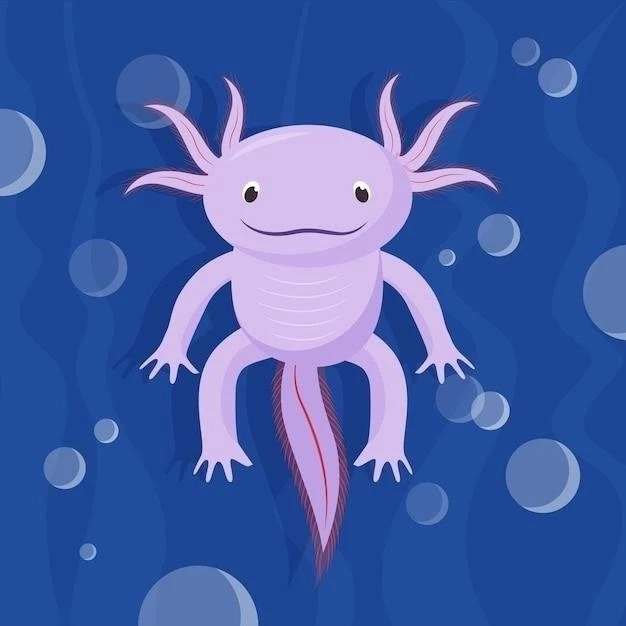The Yeti Crab: Denizen of the Deep
First discovered in 2005, the Yeti Crab, or Kiwa hirsuta, captivated the scientific world with its unique appearance and lifestyle. This remarkable crustacean, more closely related to squat lobsters than true crabs, inhabits the deep-sea hydrothermal vents of the Pacific-Antarctic Ridge. Its namesake, the mythical Yeti, is reflected in the crab’s most distinctive feature: a dense covering of silky, blond setae on its claws and body.
Discovery and Classification
The unveiling of the Yeti Crab, Kiwa hirsuta, to the scientific community in 2005 marked a significant moment in marine biology. This unusual crustacean, with its striking appearance and unique adaptations, was discovered during a Census of Marine Life expedition led by Robert Vrijenhoek of the Monterey Bay Aquarium Research Institute. Utilizing the research submarine DSV Alvin, operating from the RV Atlantis, the team encountered the Yeti Crab at a depth of 2,200 meters (7,200 feet) along the Pacific-Antarctic Ridge, approximately 1,500 kilometers (930 miles) south of Easter Island.
The discovery site, a hydrothermal vent ecosystem, provided crucial context for understanding this novel species. Hydrothermal vents are fissures in the ocean floor where geothermally heated water, rich in dissolved minerals, spews forth. These vents create localized, extreme environments that, despite the harsh conditions, teem with unusual life forms. The Yeti Crab, specifically, was found congregating around these vents, indicative of its adaptation to this challenging habitat.
The Yeti Crab’s unique morphology and genetic makeup quickly distinguished it as a new species, genus, and even family. It was classified under the family Kiwaidae, named after Kiwa, the Polynesian goddess of shellfish. The species name, hirsuta, is derived from the Latin word for “hairy,” a clear reference to the crab’s most prominent feature: the dense covering of silky, blonde setae on its pereiopods, particularly its claws. This remarkable “fur,” initially likened to that of the mythical Yeti, set this crab apart from any previously known crustacean, prompting significant scientific interest in its evolutionary history and ecological role within hydrothermal vent ecosystems.
Physical Appearance
The Yeti Crab, Kiwa hirsuta, presents a striking figure with a unique combination of physical characteristics. Averaging approximately 15 cm (5.9 inches) in length, its most captivating feature is undoubtedly the dense covering of silky, blond setae that adorn its pereiopods, especially its claws. These setae, often likened to fur, lend the crab its namesake – the mythical Yeti. This “fur” is not merely an aesthetic quirk; it plays a crucial role in the Yeti Crab’s survival in the deep-sea vent ecosystem.
Beyond its remarkable setae, the Yeti Crab exhibits a pale, almost translucent exoskeleton. This lack of pigmentation is a common adaptation among deep-sea creatures inhabiting environments devoid of sunlight. Its carapace, the hard upper shell, is relatively short and rounded, contrasting with the elongated chelipeds, or claws. These prominent claws, densely covered in setae, are believed to be used for a variety of tasks, including feeding and potentially defense.
Interestingly, the Yeti Crab possesses reduced eyes that lack pigment. This suggests a limited, if any, visual capacity in the lightless depths of its hydrothermal vent habitat. Instead, the Yeti Crab is thought to rely on other sensory modalities, such as chemoreception or mechanoreception, to navigate its environment and locate food sources.

The overall morphology of the Yeti Crab speaks volumes about its adaptation to an extreme environment. Its pale exoskeleton, hairy appendages, and reduced eyes are all testaments to its evolution in the perpetual darkness and chemically rich waters of hydrothermal vents. These unique physical characteristics continue to fascinate scientists, offering valuable insights into the biodiversity and adaptive strategies employed by life in the deep sea.
Habitat and Distribution
The Yeti Crab, Kiwa hirsuta, is a highly specialized species uniquely adapted to a specific and extreme environment: deep-sea hydrothermal vent ecosystems. These vents, found along mid-ocean ridges where tectonic plates spread apart, release geothermally heated water rich in dissolved minerals. These vents support a unique and often dense assemblage of life, fueled by chemosynthetic bacteria that form the base of the food web.
The first discovery of Kiwa hirsuta occurred at a depth of 2,200 meters (7,200 feet) on the Pacific-Antarctic Ridge, south of Easter Island. Subsequent discoveries have revealed other species of Yeti Crabs inhabiting similar hydrothermal vent ecosystems in other regions, including the East Scotia Ridge in the Atlantic sector of the Southern Ocean. These findings highlight the specialized nature of these crabs, with their distribution seemingly limited to these unique and widely dispersed habitats.
Within these vent ecosystems, Yeti Crabs occupy a narrow zone of habitability. They are often found in close proximity to vent fluid flows, where temperatures and chemical gradients are most extreme. This suggests a dependence on the chemosynthetic bacteria that thrive in these conditions, either directly as a food source or indirectly through symbiotic relationships. Navigating these extreme environments, characterized by intense heat, high pressure, and toxic chemicals, requires specialized physiological and behavioral adaptations, underscoring the remarkable resilience of the Yeti Crab.
Despite the challenges of studying life at such depths, understanding the habitat and distribution of Yeti Crabs is crucial. These unique creatures offer invaluable insights into the biodiversity and ecological processes of deep-sea hydrothermal vents, ecosystems vulnerable to human activities such as deep-sea mining. Further research into their distribution and habitat preferences is essential for informing conservation efforts and ensuring the long-term survival of these fascinating and highly specialized crustaceans.

Adaptations to Extreme Environments
The Yeti Crab’s remarkable existence in the harsh conditions of deep-sea hydrothermal vents highlights a suite of physiological and behavioral adaptations. These adaptations are crucial for surviving extreme temperatures, high pressure, toxic chemicals, and perpetual darkness. Understanding these adaptations offers a glimpse into the extraordinary resilience of life in these challenging environments.
Thriving in Hydrothermal Vents
The Yeti Crab’s ability to thrive in hydrothermal vent ecosystems, characterized by extreme temperatures, high pressure, and unique chemical compositions, is a testament to its remarkable physiological adaptations. Unlike typical marine environments bathed in sunlight, hydrothermal vents are fueled by chemosynthesis, a process where bacteria utilize energy from chemical reactions to produce organic matter. These chemosynthetic bacteria form the base of the food web in these ecosystems, supporting a diverse array of life, including the Yeti Crab.
One crucial adaptation for survival in this challenging environment is the Yeti Crab’s ability to tolerate wide fluctuations in temperature. Hydrothermal vents spew forth fluids reaching temperatures up to 400°C (752°F), while the surrounding seawater remains near freezing. Yeti Crabs are often observed near vent fluid flows, suggesting an ability to withstand rapid and significant temperature changes. Their physiological mechanisms for tolerating these extremes, while not fully understood, likely involve specialized proteins and cellular processes that maintain function under both hot and cold conditions.
Furthermore, the Yeti Crab must cope with the high hydrostatic pressure found at depths exceeding 2,000 meters (6,562 feet). The pressure at these depths is immense, yet the Yeti Crab exhibits adaptations that prevent its body from being crushed. These adaptations may involve structural reinforcements, such as a strengthened exoskeleton, and physiological mechanisms that regulate internal pressure to withstand the external forces.
The Yeti Crab’s resilience in the face of such extreme conditions underscores the remarkable adaptive potential of life on Earth. Its ability to thrive in an environment seemingly inhospitable to most organisms offers invaluable insights into the evolutionary processes that shape life in extreme environments and provides a unique model for studying adaptation at the physiological and biochemical levels.
Sensory Perception in Darkness
The depths at which Yeti Crabs reside are shrouded in perpetual darkness, rendering vision a near-obsolete sense. In the absence of sunlight, these fascinating creatures have evolved alternative sensory modalities to navigate their environment, locate food, and interact with conspecifics. Their adaptations for sensory perception in darkness highlight the remarkable plasticity of evolutionary processes in shaping life in extreme habitats.
One striking feature of the Yeti Crab is its reduced, pigmentless eyes. This suggests a limited, if any, role for vision in their daily lives. Instead, scientists believe that Yeti Crabs rely heavily on chemoreception, the detection of chemical cues in their surroundings. The dense covering of setae, particularly on their claws, is thought to play a crucial role in this process. These setae may house specialized sensory receptors that detect changes in water chemistry, such as the presence of food sources, potential mates, or even threats.
Furthermore, Yeti Crabs may utilize mechanoreception, the ability to sense vibrations and changes in water pressure, to navigate their environment. The movement of water near hydrothermal vents, driven by temperature gradients and fluid flows, could provide valuable cues for orientation and navigation. Specialized sensory organs, such as hair-like structures or pressure receptors, may allow the Yeti Crab to detect these subtle changes and use them to navigate the complex topography of hydrothermal vents.

The adaptations for sensory perception in Yeti Crabs provide a fascinating glimpse into the diverse ways organisms adapt to extreme environments. Their reliance on chemoreception and mechanoreception, rather than vision, underscores the evolutionary trade-offs inherent in adapting to life in perpetual darkness. Further research into these sensory systems is crucial for understanding the behavioral ecology of Yeti Crabs and their interactions with the unique hydrothermal vent ecosystem.

The Yeti Crab’s Unique Diet
The depths of the ocean, particularly hydrothermal vent ecosystems, present a unique challenge for sustenance. The Yeti Crab, however, has evolved a remarkable dietary strategy intrinsically linked to its environment and the chemosynthetic bacteria that thrive there. This intricate relationship between crab and bacteria forms the foundation of its unique diet.
Farming Bacteria for Sustenance
The Yeti Crab’s diet is intricately linked to its remarkable ability to cultivate and harvest chemosynthetic bacteria, a process often referred to as “farming.” This unusual dietary strategy is a testament to the intricate symbiotic relationships that have evolved in the harsh conditions of deep-sea hydrothermal vent ecosystems.
The dense, hair-like setae that cover the Yeti Crab’s claws and body are not merely for show. These setae provide the perfect substrate for the growth of chemosynthetic bacteria, which thrive in the chemically rich waters surrounding hydrothermal vents. The bacteria utilize energy from chemicals like hydrogen sulfide, abundant in vent fluids, to produce organic matter through a process called chemosynthesis. This process forms the base of the food web in these unique ecosystems, and the Yeti Crab has evolved a clever strategy to capitalize on this abundant food source.
Yeti Crabs are often observed waving their hairy claws rhythmically near vent fluid flows. This behavior is thought to facilitate the growth of their bacterial gardens by ensuring a steady supply of chemicals essential for chemosynthesis. The setae’s structure, with its numerous bristles and crevices, provides a high surface area for bacterial attachment and growth, maximizing the yield of this farming endeavor.
Once the bacteria have proliferated, the Yeti Crab uses specialized mouthparts, including comb-like structures, to harvest the bacteria from their setae. This meticulous grooming behavior ensures a steady supply of nutrient-rich bacteria, providing the Yeti Crab with the energy and sustenance needed to survive in this extreme environment. This remarkable adaptation highlights the intimate connection between the Yeti Crab and its chemosynthetic partners, a relationship that underscores the interconnectedness of life in even the most challenging habitats on Earth.
Potential for Other Food Sources
While the Yeti Crab’s primary mode of sustenance relies on the cultivation and consumption of chemosynthetic bacteria, the potential for incorporating other food sources into their diet remains an area of ongoing research and speculation. The deep-sea hydrothermal vent ecosystems they inhabit, though seemingly barren, offer a surprising array of potential food sources, and the Yeti Crab’s opportunistic feeding behaviors are not yet fully understood.
One possibility is the consumption of organic matter, known as marine snow, that drifts down from the surface waters. This detritus, composed of dead organisms, fecal matter, and other organic particles, could provide a supplementary source of nutrients for Yeti Crabs, particularly during periods of low bacterial productivity. Their scavenging behavior and the presence of detritus-feeding organisms within hydrothermal vent communities suggest that such opportunistic feeding is plausible.
Furthermore, Yeti Crabs might exhibit carnivorous or omnivorous tendencies, supplementing their diet with small invertebrates that also inhabit vent ecosystems. Their claws, while primarily adapted for bacterial farming, could potentially capture and consume small crustaceans, worms, or other opportunistic feeders drawn to the vent’s bounty. Observations of Yeti Crab behavior in situ, however, are limited, making it difficult to confirm the extent of such dietary flexibility.
The potential for consuming dissolved organic matter (DOM) from the surrounding water should also be considered. Hydrothermal vents release a complex cocktail of chemicals, some of which could be utilized by Yeti Crabs either directly or indirectly through symbiotic relationships with bacteria capable of processing these compounds. This area of research, however, is still in its infancy, and further investigations are needed to elucidate the role of DOM in the Yeti Crab’s diet.

Reproduction and Life Cycle
Despite the challenging environment, Yeti Crabs exhibit a reproductive strategy similar to other crustaceans, albeit with adaptations suited to the deep sea. Details regarding their mating behaviors, larval development, and overall life cycle, however, remain limited due to the challenges of studying these elusive creatures in their natural habitat.
Brooding Behavior
Yeti Crabs, despite residing in the challenging depths of hydrothermal vent ecosystems, exhibit a remarkable brooding behavior that underscores their adaptation to this extreme environment. Female Yeti Crabs demonstrate a high level of parental care, safeguarding their developing offspring in a manner well-suited to the unique conditions of the deep sea.
Unlike some crustaceans that release eggs directly into the water column, female Yeti Crabs retain their fertilized eggs on their abdominal appendages, specifically on the pleopods, until they hatch. These eggs are attached to specialized setae on the pleopods, forming a dense and protected brood pouch. This brooding behavior provides several advantages in the harsh conditions of hydrothermal vents.
Firstly, it shields the developing embryos from the extreme temperatures and chemical fluctuations characteristic of these environments. By keeping the eggs close to their body, females can provide a more stable and controlled environment for embryonic development. Secondly, brooding offers protection from predators and reduces the risk of eggs being swept away by strong currents near vent fluid flows.
Observations of Yeti Crab brooding behavior suggest that females invest significant energy in caring for their offspring. They meticulously clean the brood pouch, ensuring proper oxygenation and removing debris or potential pathogens. This level of parental care is crucial for maximizing the survival rate of their offspring in an environment where resources are limited and environmental conditions are harsh. Further research into the specifics of Yeti Crab brooding behavior, including brood size, developmental time, and hatching strategies, is essential for understanding the reproductive ecology of these fascinating deep-sea creatures.

Lifespan and Growth
Determining the lifespan and growth rates of deep-sea organisms like the Yeti Crab presents a significant challenge for researchers. The extreme depths, logistical complexities of in situ studies, and the relatively recent discovery of these fascinating creatures contribute to the limited data available on their life history traits. However, based on current knowledge and comparisons with other deep-sea crustaceans, we can glean insights into the potential lifespan and growth patterns of Yeti Crabs.

Deep-sea organisms, particularly those inhabiting stable environments like hydrothermal vents, are often characterized by slow growth rates and extended lifespans compared to their shallow-water counterparts. This phenomenon, termed “deep-sea gigantism” in some cases, is attributed to factors such as low temperatures, reduced metabolic rates, and limited food availability. While Yeti Crabs are not considered giants, their adaptation to the deep-sea vent environment suggests that they may exhibit similar life history traits.
Estimates of Yeti Crab lifespans are currently speculative, but scientists believe that they likely live for several years, potentially reaching decades in some cases. This extended lifespan could be attributed to their slow metabolism, a consequence of the cold temperatures and limited food availability in the deep sea. Their growth rates are also thought to be slow, with individuals gradually increasing in size as they molt their exoskeletons and replace them with larger ones. The frequency of molting, a process that requires significant energy expenditure, is likely influenced by food availability and environmental conditions.
Further research, including long-term monitoring of tagged individuals and laboratory-based studies, is crucial for gaining a more comprehensive understanding of Yeti Crab lifespan and growth patterns. These insights are essential for assessing the species’ vulnerability to environmental changes and anthropogenic impacts on their deep-sea vent habitats.










